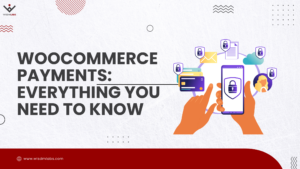This is a guest post by Tony Paul. If you’d like to contribute to our blog, feel free to get in touch with us.

If you are a small brand selling on amazon – brace for impact. Amazon is coming to eat your lunch.
I’m not exaggerating. This article is your mayday call.
Amazon positions itself as a marketplace for small businesses to reach a massive customer base. However, Amazon’s war on small brands is not so secret.
The e-commerce giant is moving to more and more niches and making the life of small brands incredibly hard by engaging in a dirty war using its private labelled products.
By all accounts, Amazon is a Goliath. As of now, Amazon sells more than 119 million products online. It is the largest product mix you will ever see in an e-commerce marketplace. In the last reported year, net revenue was 232.88 billion U.S. dollars, up from 177.86 billion U.S. dollars in 2017.
Amazon selling private label products made the sellers and other brands unhappy. People like Senator Elizabeth Warren criticized Amazon for this approach in a Townhall Q&A.

When you are starting a consumer-facing business – Amazon is the go-to online sales channel. Partnering with Amazon has its benefits; however, there are enormous risks.
Selling your products on your website and competing with Amazon is a viable option if you have the guts and creativity. Amazon has its strengths, but there are weaknesses too. Smaller brands can beat Amazon if they can exploit these weaknesses.
Here are the three major weaknesses of Amazon.
Amazon has a fake products problem :
In 2016, Apple complained that Amazon’s US site was selling counterfeit products which were potentially life-threatening. The current process for taking down a fake product on Amazon is a very labor intensive work. Even though there are new initiatives like Project Zero, Amazon still wants to play an outsider role and let the brands do all the work.
Amazon has a fake review problem :
People with a vested interest artificially inflate the rating of the product. So far Amazon’s effort to resolve this was not successful.
Here’s a good example: You’re making fantastic fitness bands. An excellent product would cost around $180, but there are countless knock-offs priced as low as $20 to $30. But they can’t possibly be as good, right? Well, they look like yours, and they have more than a hundred five star reviewers. A price savvy person will jump on and buy it on the first chance.
Amazon has a content problem :
There are more than 119 million products on Amazon. The product content on Amazon for many or the products are weak and does a poor job clearly explaining what the product does, and they don’t properly address the concerns of the customers.
Sometimes even big brands do a poor job, and this problem is an opportunity for small brands because there’s no way Amazon can fix this problem because the sellers are coming up with the content.
11 things a small brand should master to beat Amazon
Give A+ Support
Amazon is a very customer-centric company. That is one of the pillars of their success. Amazon has invested billions of dollars perfecting the customer service, and many parts of the customer support are automated.
Automation has a negative effect though; It lacks a personal connection with the customer.
As a small brand, you can afford to talk to your customers. Make it very easy for the customers to find your number and talk. If a customer gets the founder of a brand on the call addressing their problems – that is next level customer experience. They will never forget you.

Responding to reviews (both positive and negative) on your site can improve your brand equity. Make sure you talk to the person who had a bad experience, solve the problem, and they will come back to you.
Your brand should be known for A+ customer support to retain your customers. Under-Promise, Over-Deliver. A classic case is of Zappos. They’re known for their obsession for customer success. Be obsessed about customer service like Zappos.
Give positive experiences on delivery and returns
Customers expect to receive the products quickly and easily, no matter where they live. It can be a challenge for a small brand to meet. However, solving this challenge is inevitable for success.
See how Amazon delivers for your competing products and try to at least match the offer, but ideally, provide a better and positive delivery experience.
The best thing you can do is to talk to your customers to identify their delivery preferences. Based on the customer preferences, you should explore multiple delivery options, including same day delivery. Major delivery providers like UPS, Purolator, and FedEx are offering same-day delivery service.
Another thing is to make product returns very easy. People are worried about returns when they make a purchase. Make sure you address this question on the product page and explain your returns policy in detail.
Never compete on price:
Amazon’s pricing war on small brands is not a secret. Amazon mastered the art of undercutting small retailers on price. With Amazon’s private label products – the pricing war is more fierce than ever.
So what do you do as a small brand selling online?
Don’t compete on price at all.
Position your product as a premium product and charge a premium. Compete on your brand equity rather than price. Give your packaging a premium looking design and compete on brand equity.
Be the king of content:
In other words, you exploit Amazon’s content problem.
The customer is on your website, and now you have to give them a reason to click the buy button.
You should tell your customer a story about the benefits of your products and how it solves their problems. You can use a combination of texts, images, and videos to tell a convincing story. One way to find what your customers are concerned about is to study the reviews of competing products on Amazon Carefully.
Note the problems of competing products, what the customers want and make sure your product page has an answer to every one of those concerns.
Make your website search engine friendly buy properly doing the technical SEO and content SEO.
It is a great idea to make a video to convey your product message loud and clear. You can get DIY video making tools for as little as $25. Nothing converts better than a good video. Recently people started using well-designed gif images as well.
Provide an Amazing User experience
Turning website visitors into customers is an art. Amazing user experience has a lot to do with conversions.
People often get confused between design and user experience. You can have a visually appealing website and suck at user experience. Good user experience makes the entire shopping experience smooth.
Neglecting user experience can create friction with your visitors, and can drive them away. Make sure that the product is easily discoverable and the description answers the concerns of your customers.
You should constantly measure, test and improve user experience using A/B Testing and other methods. Make the entire buying and checkout experience as smooth as it can get.
Have loyalty programs
Customer retention is the key to your online business. Getting new customers is harder than keeping your customers.
You have to give your customers a reason to come back to your online store. An effective loyalty or rewards program is an excellent customer retention tool.
The best loyalty programs are designed to appeal to a company’s most loyal customers.
Identify what your key customers need and find ways to keep engaged. Use marketing automation tools to automate the engagement.
Give your most loyal customers free stuff once in a while, give them early access to new products and make them your brand evangelists. A retailer has to put a lot of thought into developing and executing a loyalty program.
You can start with a pilot program to test what kind of loyalty program works for your customer segment. Once you see results – slowly scale it.
Have a mobile app
Small retailers ignore mobile, and that is a big mistake. You can turn your website into a mobile app very quickly and without any coding. If you have a loyalty program, and you have a mobile app – keeping loyal customers engaged will be a much easier task on mobile.
You can use tools like Appmakers to build a mobile app without coding and investing a lot of money.
Use reviews
There are a ton of fake reviews on Amazon and customers know it. This is a vulnerability small brands can exploit. Show the reviews of real people on your brand website. Authentic reviews will boost your brand credibility and increase sales. Use a tool like Trustpilot to integrate reviews to your online store.
Even better if you can record video reviews from a real customer and display it on the website- video converts better than anything.
Have a blog
Your small retail website needs traffic and transactions. One great way to attract visitors is to write blogs about your product and optimize it for on page and technical SEO. Write detailed how-to guides, produce short videos and make sure you are creating content that your customers want.
Make sure your page pops up in search results when people search for an alternative for your competitor product and other relevant keywords.
Any retailer can do it without spending money on it.
Take advantage of marketing automation
As a small brand, you have limited resources and time. As you grow, scaling up your customer engagement is a big challenge. Small brands should use marketing automation to scale your customer engagement. Customers engagement history can be beneficial in providing personalized recommendations.
A good example would be the case of a fitness band. If your customer is a fitness enthusiast – recommending a new cool fitness band to him would be a good idea.
If you want to do it at scale for different segments of people – you need their engagement history and marketing automation.
Creatively use social media
When used creatively, social media can produce significant benefits for your business. The biggest challenge is that only a few will provide enough Return on investment for your business.
If you’re selling fashion, – Instagram would be a great social media platform. However – if you’re selling machine tools – Instagram won’t work very well.
A good idea is to do a pilot on major social media platforms, look at the ROI and scale your efforts on the channels that work.
Conclusion
Competing with Amazon is hard, but not impossible. If you are willing to work hard and smart – you can dominate your niche. Even Amazon has an Achilles heel; you need to find how to exploit it.
Author Bio
Tony Paul is the Co-founder of Datahut. He’s been helping companies solving their data extraction problems for the last six years. He’s a chess lover and an ardent fan of the lean startup. He writes about Web Scraping, Online retail, Sales, Marketing Tips, etc. Connect with him on Twitter or LinkedIn










